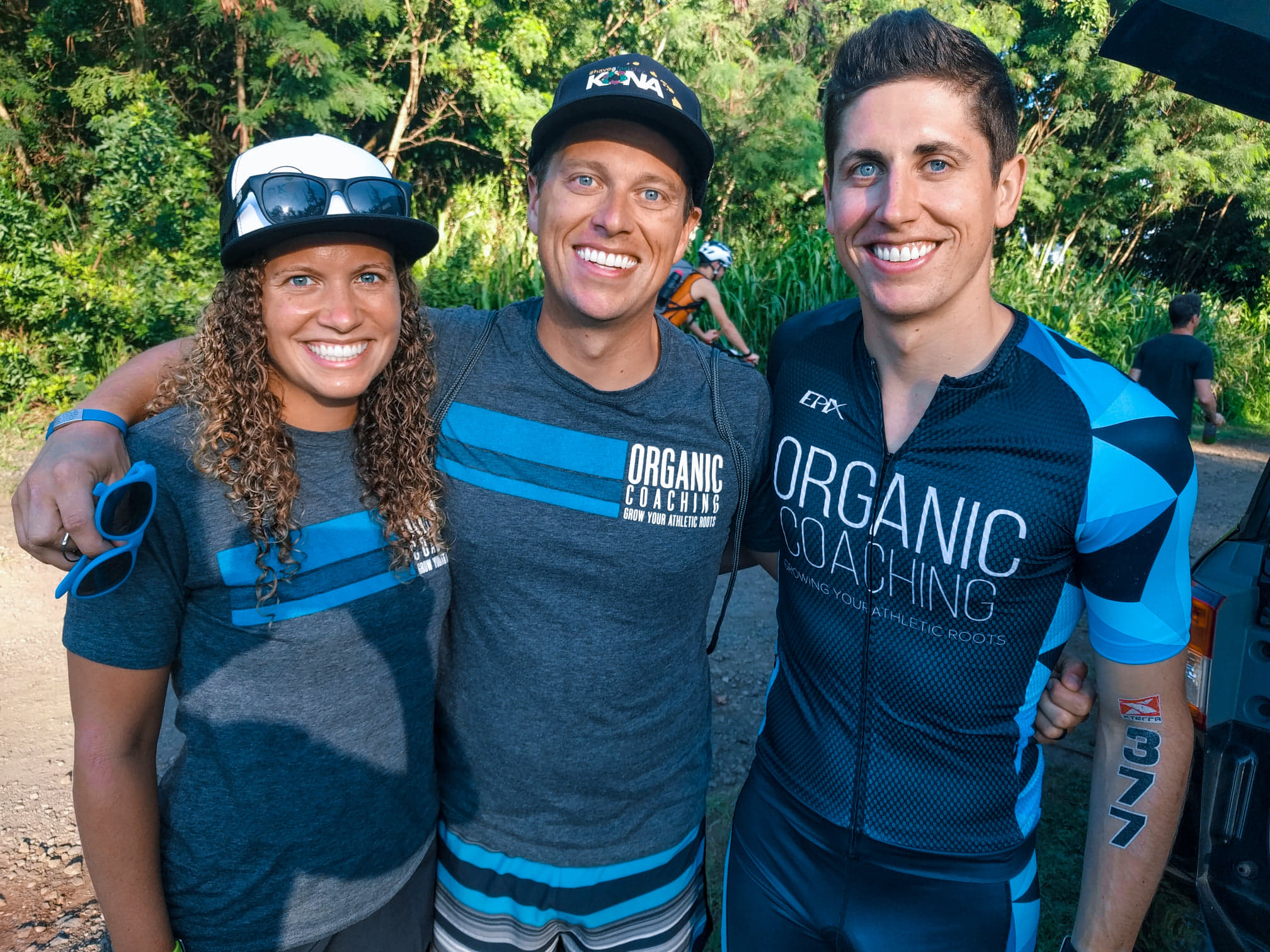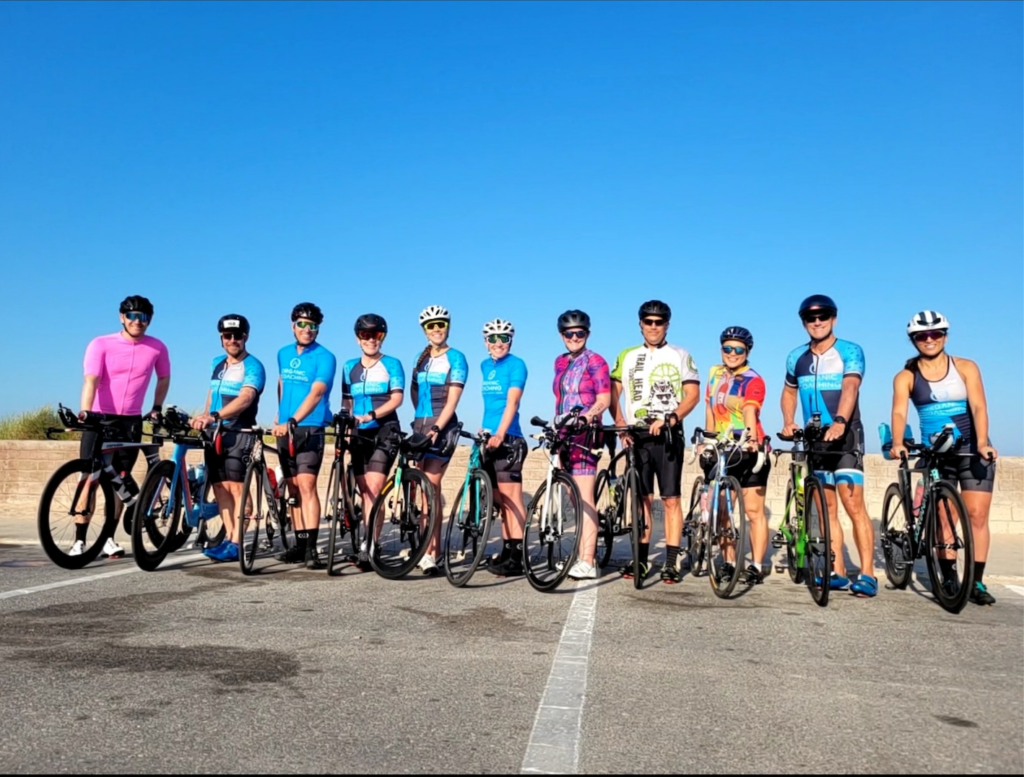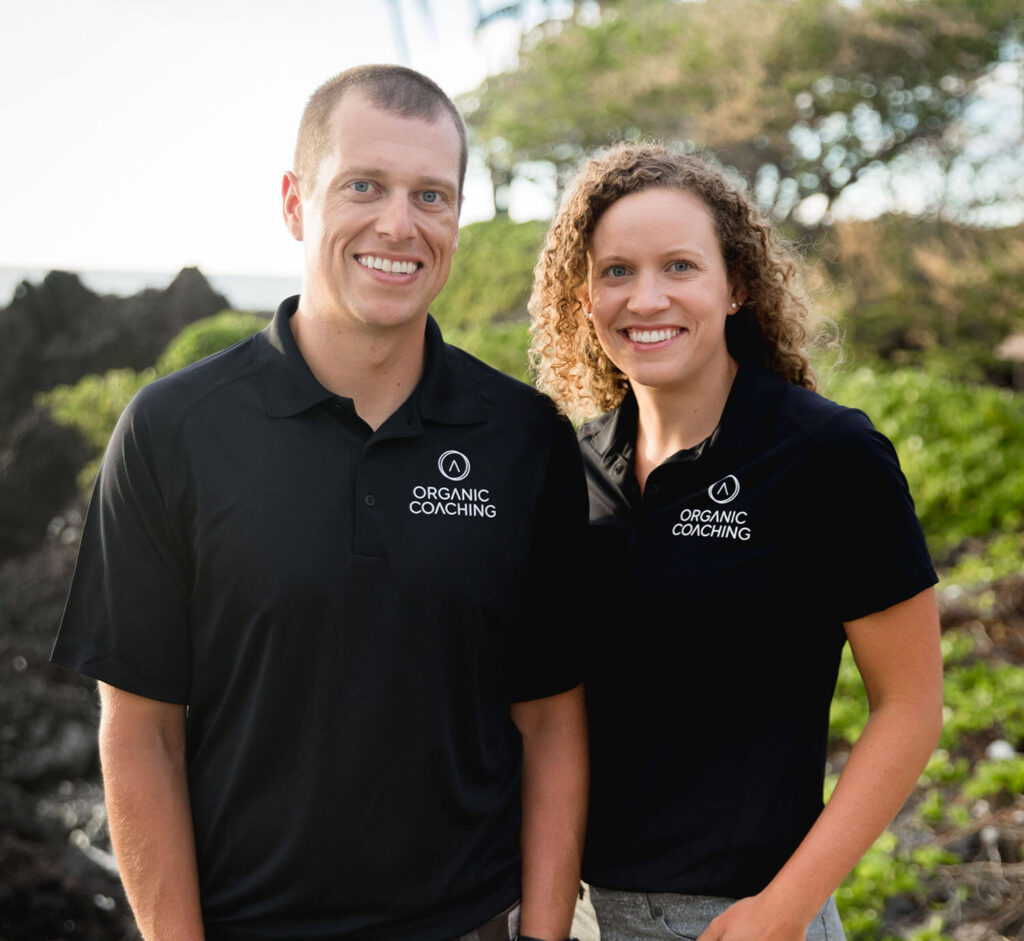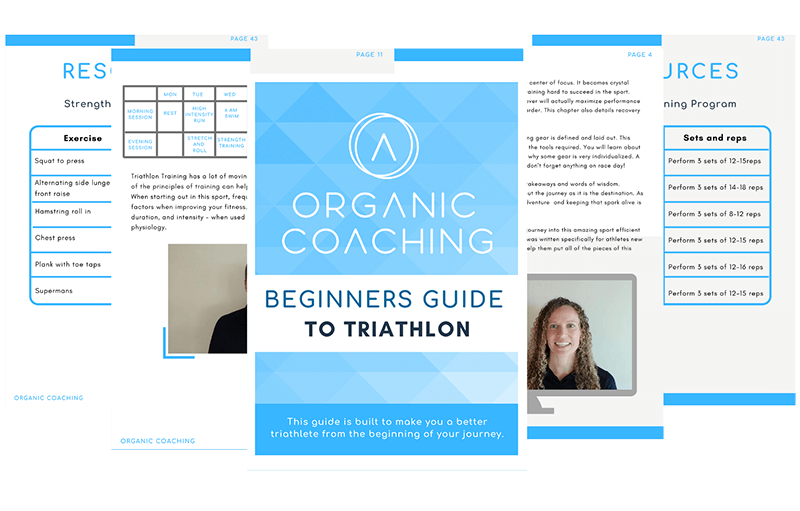
As endurance athletes, we are training our bodies to be the most efficient as they possibly can be. A big part of efficiency is our cadence. While most athletes are familiar with running cadence, you might be wondering what exactly bike cadence is.
Today we’re breaking down exactly what bike cadence is, whether high or low cadence is best, and how triathletes should properly gear their bikes for an ideal cadence.

Cadence defines how many cycles per given period of time your body completes a repetitive motion.
Therefore, bike cadence is how many times your legs rotate around the crank in a given period of time. We use RPM to measure bike cadence, meaning rotations per minute.
Run cadence, on the other hand, is how many foot strikes you have in a given period of time. We use SPM, meaning steps per minute.
As endurance athletes, we are training our bodies to be the most efficient as they possibly can be and cadence is a key factor in completing the puzzle.
1) Neuromuscular efficiency: The ability to ride at race-specific RPM, under appropriate load.
2) Aerobic Power: Underlying factor for success in all cycling disciplines.
For many years, scientific studies have shown that a low cadence was actually more economical (meaning that the riders consumed less oxygen for the given power output). But most of these studies assumed a power output well below what you’d expect in the final of a race.
Low cadence may require less oxygen, but it creates more neuromuscular fatigue, reduced lactate clearance, and increased dependence on fast-twitch muscle fibers. High cadence, on the other hand, requires less muscle activation, but it usually comes at a higher energy cost at lower power outputs.
For many athletes, a cadence between 80-90 RPM is ideal. This mixes in muscle recruitment while balancing energy costs.
Gearing is one of the most important aspects of a successful race, but the chaos and overstimulation on race day may cause new riders to neglect the correct usage of their gears to have their best bike performance. That is why practicing in training is so important.
Anticipate your race terrain. If you are doing a race with steep (over 5%) grades that may force you out of the saddle it’s best to practice this in training. If you are a very small athlete that requires a higher cadence you may find yourself getting out of the saddle on steep grades to get over the hill. If this is you, practicing getting out of the saddle will be beneficial.
Very few courses have no variability, so training should always have variability.
If you primarily ride indoors make sure to slightly vary cadence during longer Z2/3 work. This will help with the efficacy of muscle fibers and energy recruitment.
If you ride on a smart trainer and are using programs such as Rouvy and Zwift. Turn ERG mode off for your long rides and choose routes that are similar to your race.
Biking outdoors? Make sure you’re keeping yourself safe by following these 18 outdoor riding guidelines.
Happy riding!
-Coach Tyler


Carly and Tyler Guggemos built Organic Coaching in 2014 with a simple philosophy that works. The idea is to take what you have and grow it to get faster, fitter and stronger. And to do it with the time you have – not the time you wish you had.

For athletes who are ready to take their training to the next level while still thriving and succeeding in their professional and family life.
Copyright © 2024 Organic Coaching LLC